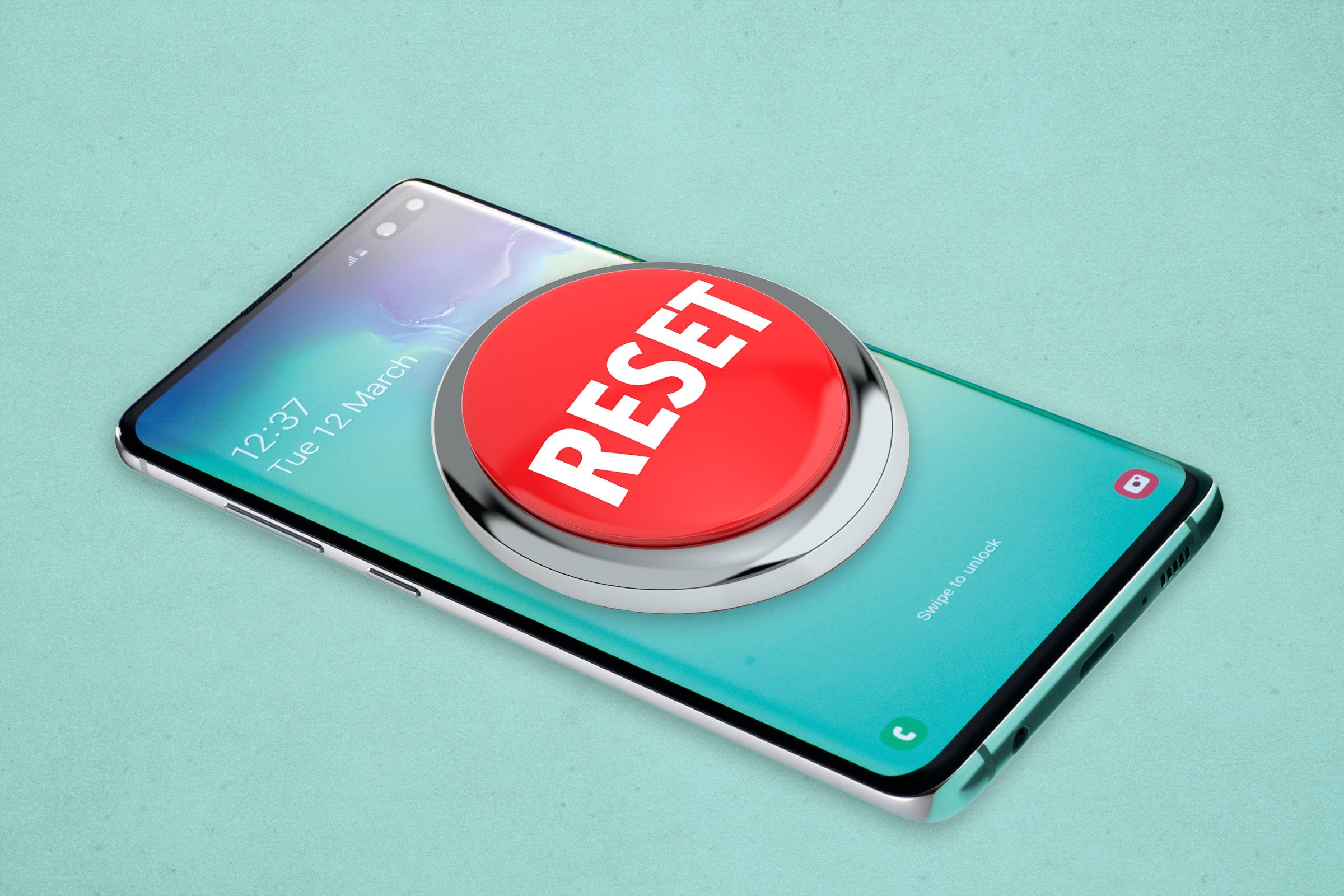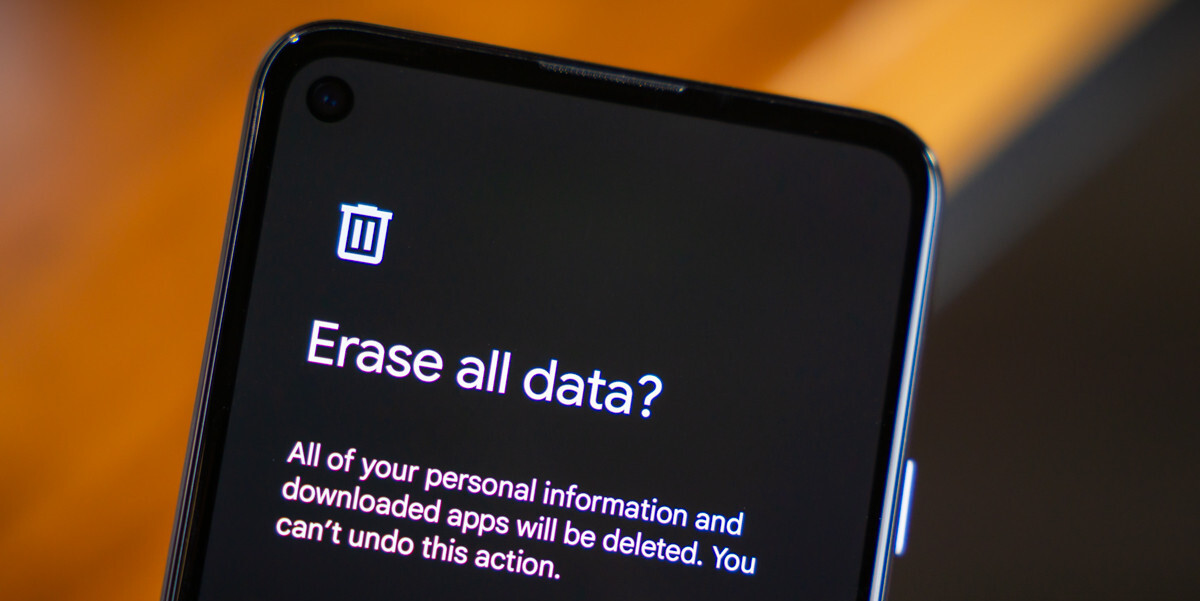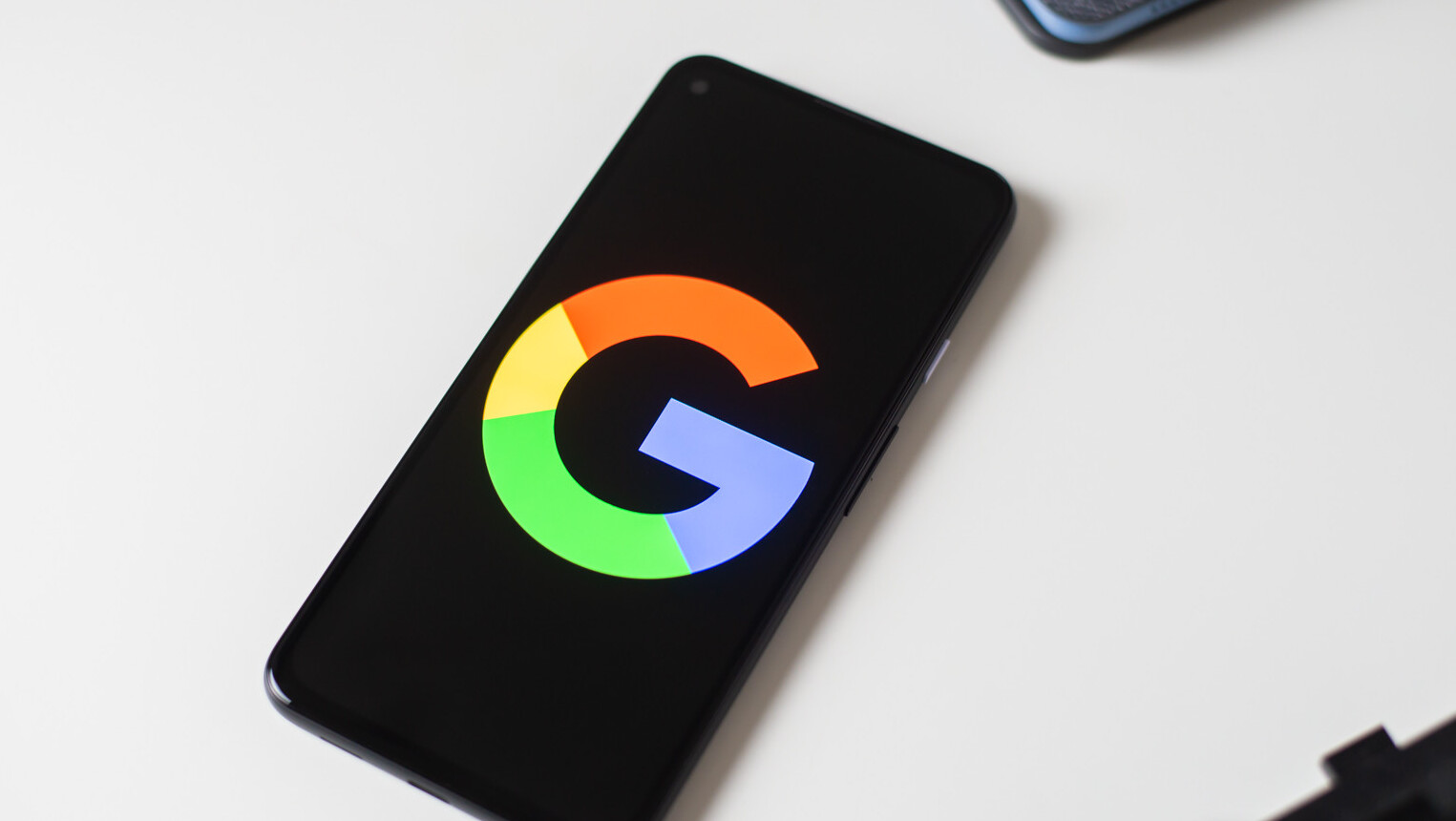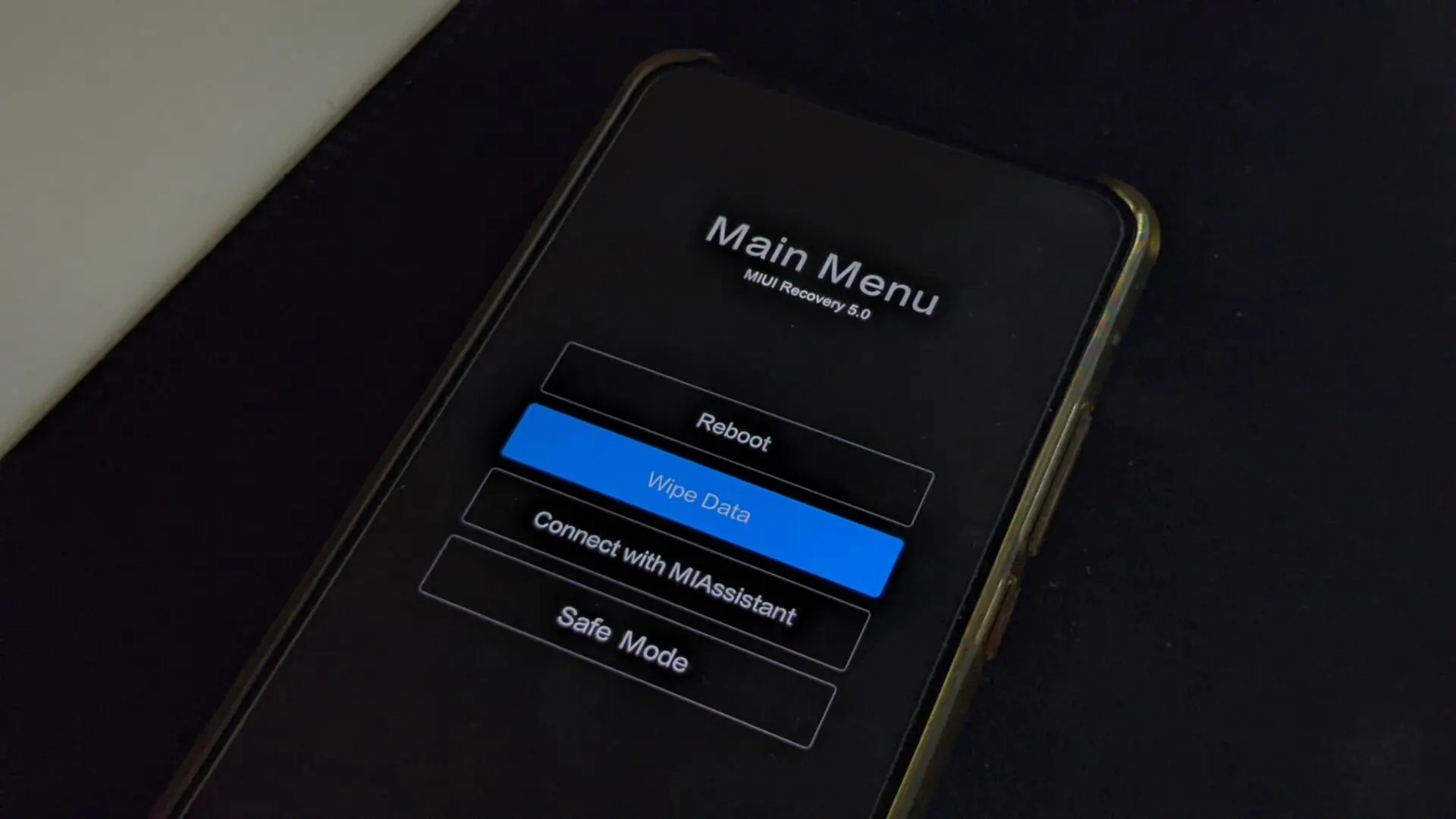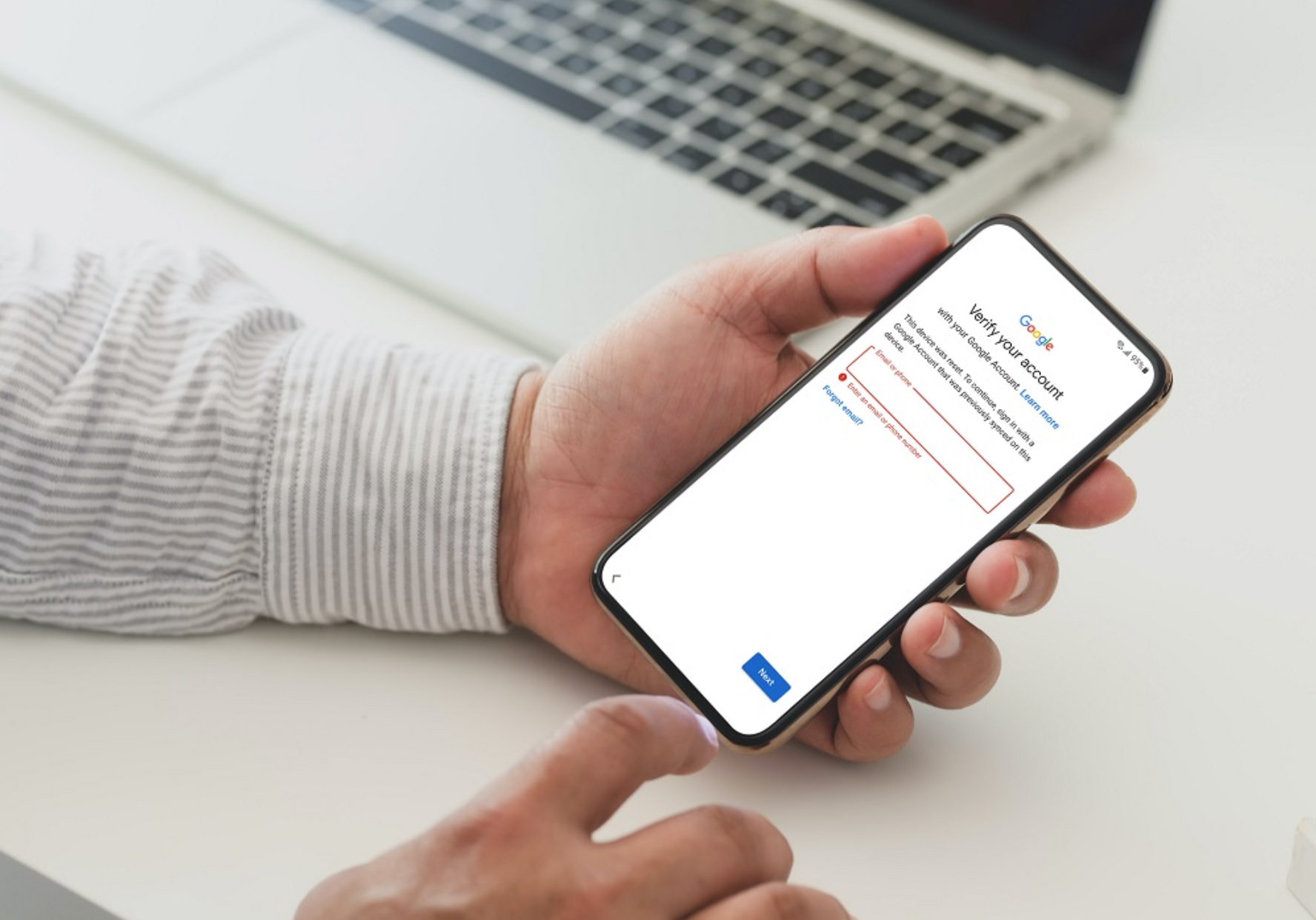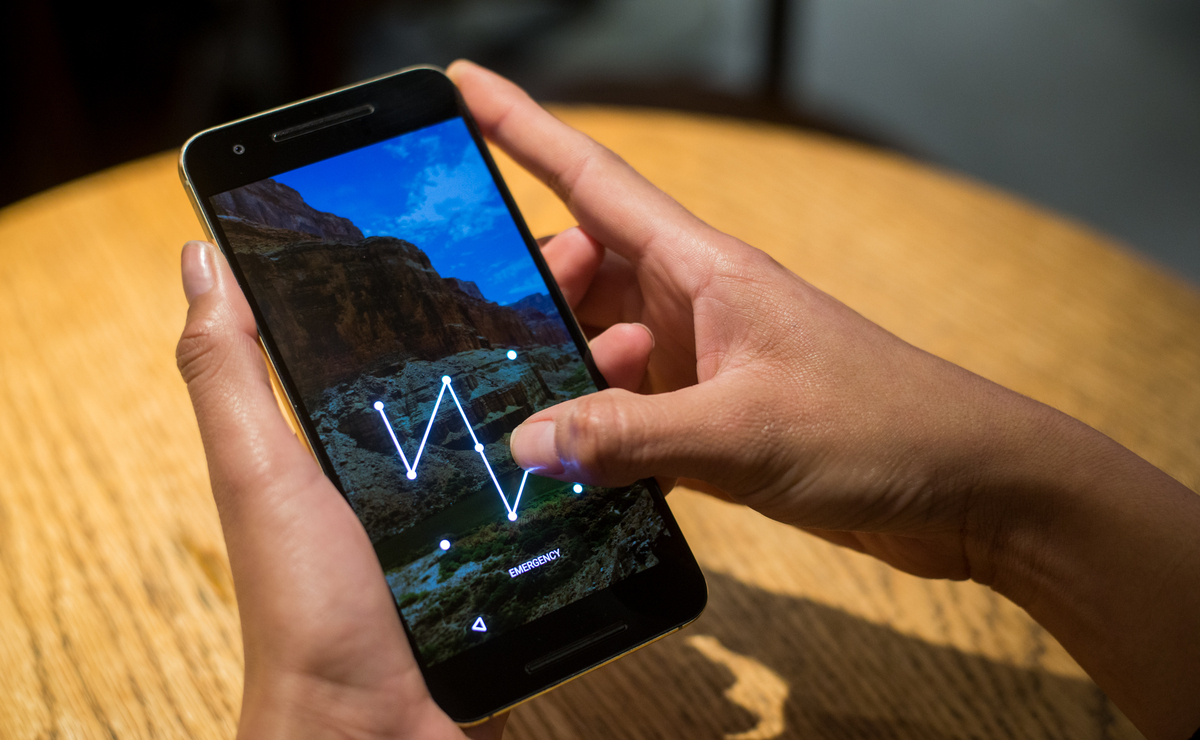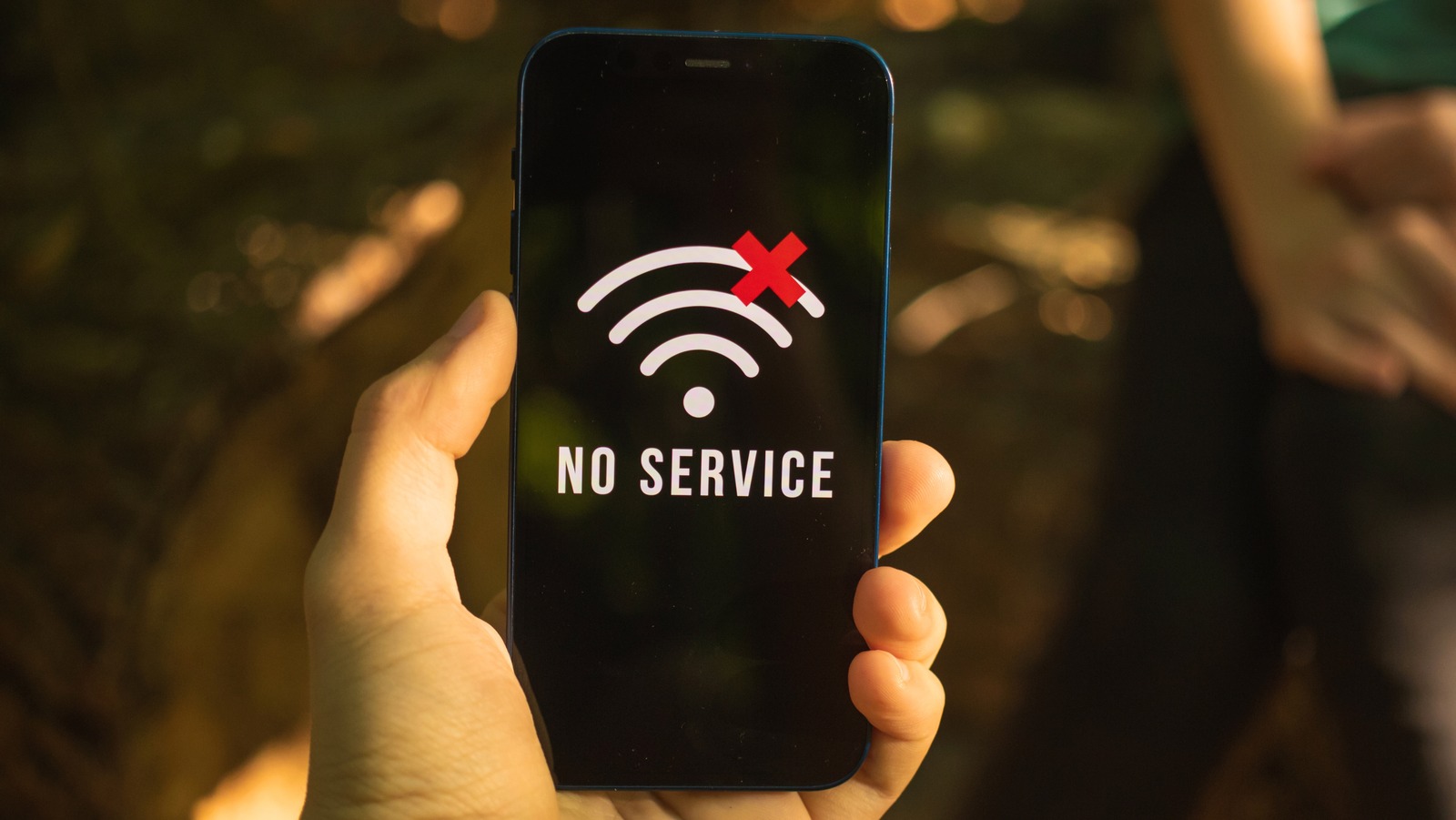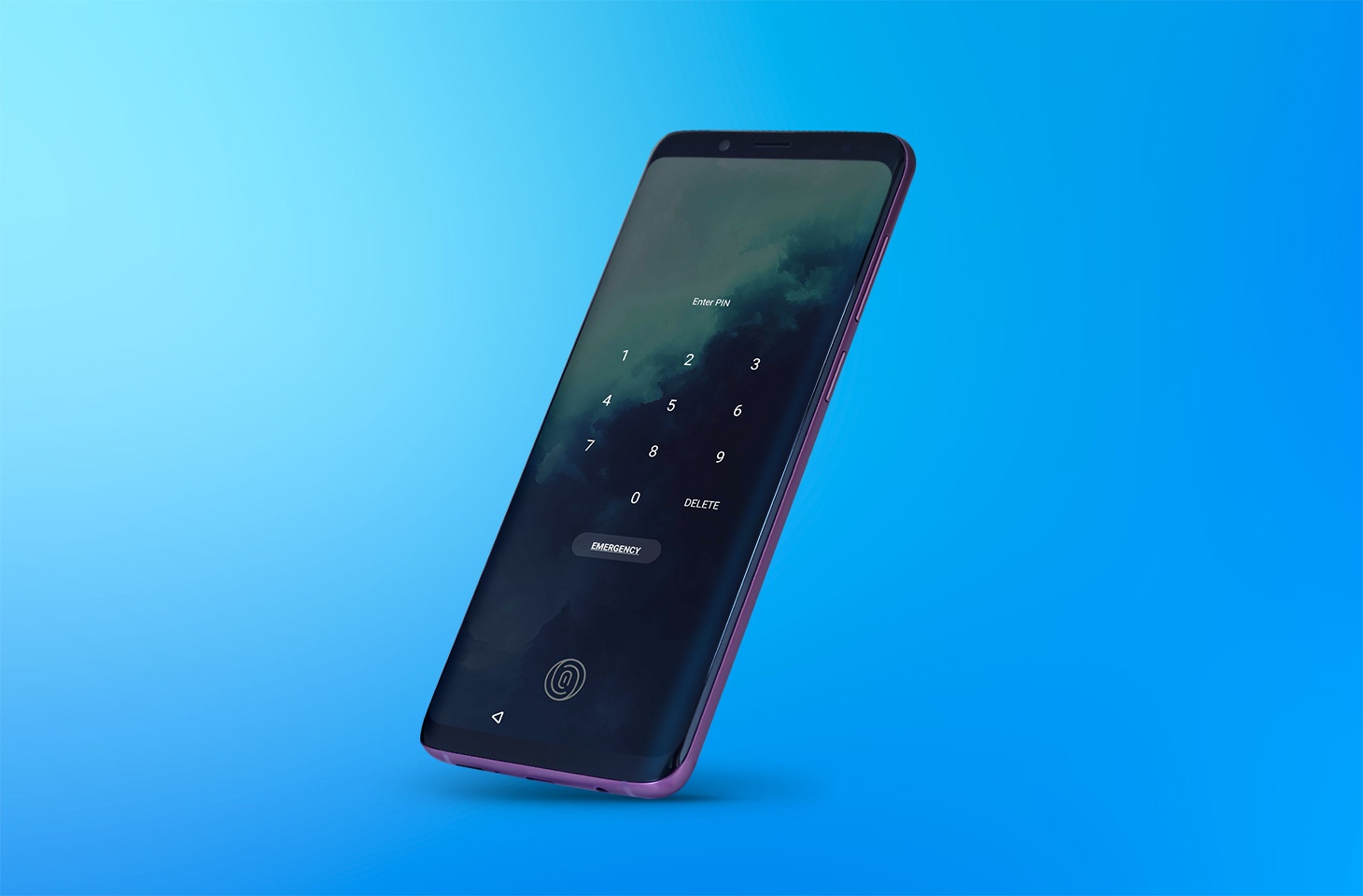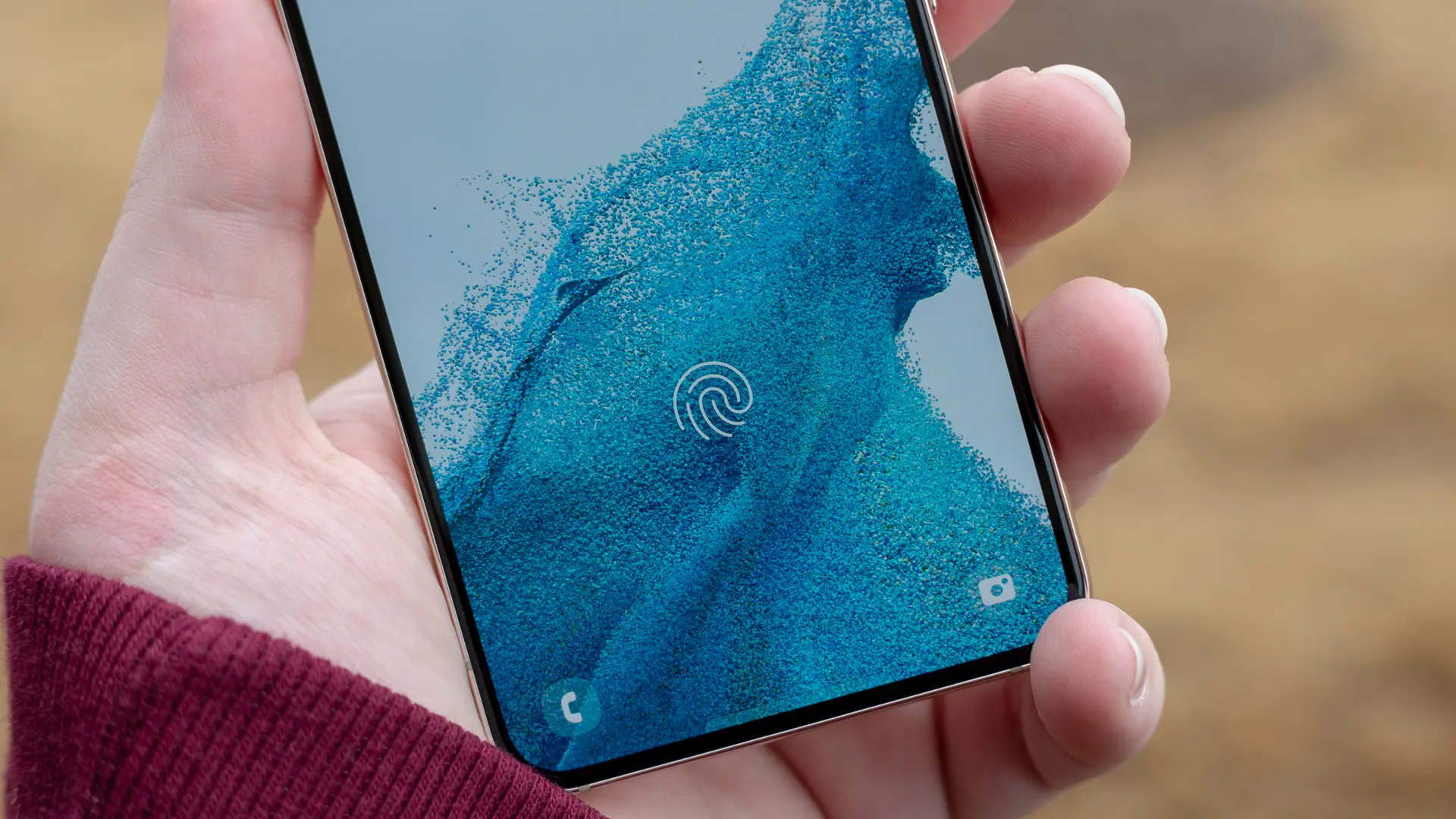Why Would You Need to Reset Your Android Phone?
There are several reasons why you might need to reset your Android phone. It can be a helpful troubleshooting step when you’re experiencing performance issues, software glitches, or unusual behavior. Here are some common scenarios where resetting your Android phone can be beneficial:
1. Resolve Software Issues: Over time, your phone’s operating system and applications can accumulate temporary files, cache data, and system errors that can impact performance. Resetting your Android phone can clear out these issues and help bring back smooth functioning.
2. Remove Malware or Viruses: If your phone has been infected with malware or viruses, resetting it can eliminate these malicious elements. A factory reset wipes out all the installed apps and their associated data, including any potential security threats.
3. Fix Persistent App Problems: In some cases, certain apps may encounter persistent problems that can’t be easily resolved by clearing app data or cache. Resetting your Android phone can provide a fresh start, allowing you to reinstall the app and resolve any lingering issues.
4. Enhance Privacy and Security: If you’re planning to sell or give away your Android phone, resetting it is crucial to protect your personal data. A factory reset ensures that all your personal information, accounts, and settings are completely erased, reducing the risk of data breaches or unauthorized access.
5. Troubleshoot Performance Issues: If your phone is slowing down, freezing, or experiencing frequent crashes, resetting it can help identify if the problem is due to software or hardware. By starting fresh, you can determine if the issue persists after a reset, which can guide you in seeking further assistance or repairs.
6. Prepare for System Updates: Sometimes, major software updates may require a clean slate to ensure a smooth installation. Resetting your Android phone before updating the OS can minimize compatibility issues and potential errors that may arise during the update process.
7. Start with a Clean Slate: Lastly, some users simply prefer to start fresh with their Android phone. Resetting allows you to remove all apps, settings, and data, giving you the opportunity to customize your device from scratch, ensuring a clutter-free and personalized experience.
Now that you understand the various reasons why you might need to reset your Android phone, let’s dive into the different methods to perform a reset.
Different Methods to Reset an Android Phone
When it comes to resetting an Android phone, there are several methods you can choose from. The method you use will depend on your specific needs and the situation you’re facing. Let’s explore three common methods:
Method 1: Factory Reset through Settings:
This method is the most straightforward way to reset your Android phone. Here’s how you can do it:
- Go to the “Settings” menu on your Android phone.
- Scroll down and select “System” or “System & Updates”.
- Tap on “Reset” or “Reset Options”.
- Select “Factory data reset” or a similar option.
- Review the information and confirm the reset.
Keep in mind that the exact steps may vary slightly depending on your Android device model and version of Android OS.
Method 2: Hard Reset through Recovery Mode:
If your Android phone is unresponsive, or you’re unable to access the Settings menu, you can try a hard reset using recovery mode. Here’s how:
- Turn off your Android phone completely.
- Press and hold the specific key combination to boot into recovery mode (e.g., Power button + Volume Up).
- Use the volume keys to navigate and the power button to select the “Wipe data/factory reset” option.
- Confirm the reset and wait for the process to complete.
Note that the key combination to access recovery mode can differ depending on the manufacturer and model of your Android phone. You can usually find specific instructions on the manufacturer’s website or by searching online.
Method 3: Reset Using Google Find My Device:
If you’ve misplaced your Android phone or it’s been stolen, you can also remotely reset it using Google’s Find My Device feature. Here’s how:
- Using a computer or another device, go to the Find My Device website (www.android.com/find).
- Log in with your Google account associated with the lost phone.
- Select your lost Android phone from the list of devices.
- Choose the “Erase Device” option and follow any additional instructions.
This method is especially helpful when you’re concerned about the security of your personal data on a lost or stolen device.
Now that you’re familiar with the different methods to reset your Android phone, let’s discuss some important considerations before you proceed with a reset.
Method 1: Factory Reset through Settings
The factory reset option in the Settings menu is the most commonly used method to reset an Android phone. This method allows you to reset your device to its original factory settings, erasing all data and settings. Here’s how to perform a factory reset through the Settings menu:
- Open the “Settings” app on your Android phone. You can usually find it in your app drawer or by swiping down and tapping the gear icon in the notification panel.
- Scroll down and tap on “System” or “System & Updates” (the exact name may vary depending on your device).
- Select “Reset” or “Reset Options”.
- Look for the “Factory data reset” or a similar option, and tap on it.
- You will see a warning message stating that all data will be erased. Take a moment to review this information, as there is no way to undo a factory reset.
- If you have a screen lock (PIN, pattern, or password) enabled, you will be prompted to enter it.
- Finally, tap on the “Reset” button to initiate the factory reset process.
Note that the steps and menu options may vary slightly depending on your Android device model and the version of Android OS. If you have difficulty finding the reset option, refer to your device’s user manual or the manufacturer’s support website for specific instructions.
It is important to back up any important data or files before performing a factory reset. This includes contacts, photos, videos, documents, and any other valuable information stored on your device. You can back up your data to an external storage device, cloud storage service, or by using backup apps available on the Google Play Store.
Once you have initiated the factory reset, the phone will restart and begin the process of erasing all data and restoring it to its original state. The duration of this process may vary depending on the device and the amount of data stored on it.
After the factory reset is complete, your Android phone will be as if you just bought it brand new. You will need to go through the initial setup process, including connecting to a Wi-Fi network, signing in with your Google account, and configuring other settings according to your preferences.
Remember that performing a factory reset will permanently delete all data from your phone’s internal storage, including installed apps, accounts, saved passwords, and personal settings. Be absolutely sure that you have backed up any important data before proceeding with the factory reset.
Now that you know how to perform a factory reset through the Settings menu, let’s explore another method – the hard reset through recovery mode.
Method 2: Hard Reset through Recovery Mode
If you’re unable to access the Settings menu on your Android phone, or if it’s unresponsive, you can perform a hard reset using recovery mode. This method allows you to reset your device by booting into a separate recovery environment. Here’s how to do a hard reset through recovery mode:
- Make sure your Android phone is turned off completely.
- Press and hold a specific key combination to enter recovery mode. This key combination varies depending on your device’s manufacturer and model. Common combinations include holding the Power button along with the Volume Up or Volume Down button.
- Once you enter recovery mode, you can navigate using the volume keys and select options using the Power button. Look for an option that says “Wipe data/factory reset” or something similar. Use the volume keys to highlight the option and the Power button to select it.
- Confirm the reset on the next screen. This step may require you to navigate through a Yes/No confirmation or use a different key combination depending on your device.
- Wait for the hard reset process to complete. The phone will erase all data and return to its original factory settings.
- Once the reset is finished, you will generally see an option to reboot the phone. Use the Power button to restart the device.
It’s important to note that the key combination to enter recovery mode can vary between different Android phone models. If you’re unsure of the correct combination for your device, consult the manufacturer’s website or search online for specific instructions.
Performing a hard reset through recovery mode is useful when your phone is experiencing severe software issues, boot loop problems, or when it’s unresponsive. It can help you bypass any system issues and restore your phone to a working state.
However, it’s important to keep in mind that a hard reset through recovery mode will erase all data on your phone’s internal storage, including installed apps, contacts, messages, and personal settings. Make sure to back up any important data before proceeding with a hard reset.
Now that you know how to perform a hard reset through recovery mode, let’s explore another method for resetting an Android phone – resetting using Google Find My Device.
Method 3: Reset Using Google Find My Device
If you have lost your Android phone or it has been stolen, you can still reset it remotely using Google’s Find My Device feature. This method allows you to erase all data on your device and restore it to its factory settings. Here’s how to reset your Android phone using Google Find My Device:
- Using a computer or another device, open a web browser and go to the Find My Device website (www.android.com/find).
- Log in using the Google account that is associated with your lost or stolen Android phone.
- Once you’re logged in, you will see a map with the location of your device (if it’s still online and can be located). If the device is not connected to the internet or cannot be located, it will show the last known location.
- In the left sidebar, click on the “Erase Device” option.
- A warning message will appear stating that erasing the device will delete all data, and the device will no longer be connected to your Google account. Read the information carefully to understand the consequences of erasing your device.
- If you’re sure you want to proceed, click on the “Erase” button.
- Google will now send a command to your Android phone to initiate the factory reset process. The device will erase all data and settings and return to its original factory state.
It’s important to note that using Google Find My Device to reset your Android phone will permanently erase all data on the device, including apps, photos, videos, contacts, and messages. This action cannot be undone, so make sure you have backed up any important data before proceeding with the reset.
This method is especially useful when you are unable to recover your lost or stolen Android phone and want to ensure that your personal information remains secure. By remotely erasing the device, you can prevent unauthorized access to your data.
Remember, the Find My Device feature requires that your lost or stolen Android phone is connected to the internet and has location services enabled. If the device is turned off or not connected to the internet, you won’t be able to use this method to reset it remotely.
Now that you are familiar with the different methods to reset an Android phone, it’s important to consider a few things before proceeding with a reset.
Important Things to Consider before Resetting Your Android Phone
Before you proceed with resetting your Android phone, there are several important factors to consider. Taking these into account will help ensure a smooth and successful reset process. Here are some key things to think about:
1. Backup Your Data: Resetting your Android phone will erase all data and settings on the device, so it’s crucial to back up any important files, photos, videos, contacts, and other data that you want to keep. You can use cloud storage services, external storage devices, or backup apps available on the Google Play Store to secure your data before the reset.
2. Remove External Storage and SIM Cards: If your Android phone has an external memory card or a SIM card inserted, it’s advisable to remove them before initiating the reset. This will prevent any accidental deletion of data stored on these cards and ensure they remain intact for future use.
3. Verify Google Account Credentials: If your Android phone is linked to a Google account, make sure that you know the correct credentials (username and password) associated with the account. This will be necessary during the setup process after the reset, as you’ll be required to sign in to your Google account to regain access to certain features and services.
4. Understand the Implications: Performing a reset on your Android phone is a drastic step that has permanent consequences. It will remove all apps, accounts, settings, and personal data. It’s crucial to understand that there is no way to undo the reset once it is initiated. Take the time to consider if a reset is truly necessary and if you have exhausted all other troubleshooting options.
5. Check for Firmware Updates: Before resetting your Android phone, check if there are any pending firmware updates available for your device. Updating the firmware can sometimes resolve issues and improve performance, eliminating the need for a reset. Go to the “Settings” menu, select “System” or “Software Updates,” and check for any available updates.
6. Review Device-Specific Instructions: Different Android phone models and manufacturers may have specific instructions or features related to resetting. Before proceeding, consult the user manual for your device or visit the manufacturer’s support website to ensure you have accurate and up-to-date information on how to perform a reset specific to your device.
7. Disable Factory Reset Protection (FRP) Lock: If you have FRP lock enabled on your Android phone (a security feature that requires your Google account credentials after a reset), make sure to disable it before performing the reset. This can be done in the “Settings” menu under “Security” or “Accounts” options, depending on your device.
8. Charge Your Phone: Lastly, ensure that your Android phone has sufficient battery power before initiating a reset. A low battery level can interrupt the reset process and potentially cause issues. It’s recommended to have at least 50% battery capacity or plug your phone into a charger during the reset.
By considering these important factors, you can better prepare yourself for the reset process and minimize the risk of any potential issues or data loss. After carefully reviewing these considerations, you can confidently proceed with resetting your Android phone using one of the methods discussed earlier.
FAQs: Common Questions about Resetting an Android Phone
Resetting an Android phone can raise various questions and concerns. To provide you with a better understanding, here are answers to some frequently asked questions related to resetting an Android phone:
Q1: Will resetting my Android phone delete all my data?
A1: Yes, resetting your Android phone will erase all data and settings on the device. It is essential to back up any important files or data before initiating a reset.
Q2: Can I reset my Android phone without losing my apps and contacts?
A2: No, a reset will remove all apps and contacts from your Android phone. It is crucial to back up your contacts and reinstall your apps after the reset process.
Q3: Will resetting my Android phone remove viruses?
A3: Yes, a factory reset will remove any viruses or malware that may be present on your Android phone. However, it is still advisable to have a robust antivirus application installed after the reset.
Q4: Can I use Google Find My Device to reset a stolen Android phone?
A4: Yes, Google’s Find My Device feature allows you to remotely reset a lost or stolen Android phone. This can help safeguard your personal information and prevent unauthorized access to your device.
Q5: Is it possible to reverse a factory reset on an Android phone?
A5: No, once a factory reset is performed, it cannot be reversed. All data and settings are permanently erased, and the phone is restored to its original factory state.
Q6: What should I do before resetting an Android phone?
A6: Before resetting your Android phone, it is crucial to back up any important data or files, remove external storage and SIM cards, ensure you have the correct Google account credentials, and understand the consequences of the reset.
Q7: Can I reset an Android phone with a damaged screen?
A7: Yes, it is possible to reset an Android phone with a damaged screen by using recovery mode. However, the exact steps may vary depending on the device, so it’s recommended to consult the manufacturer’s support website or seek professional assistance.
Q8: Do I need to update my Android phone before resetting it?
A8: It is advisable to check for any available firmware updates before proceeding with a reset. Updating the firmware can sometimes resolve issues and may eliminate the need for a reset.
Q9: Can I reset an Android phone with a forgotten screen lock PIN or password?
A9: Yes, you can still reset an Android phone with a forgotten screen lock PIN or password. However, note that all data and settings on the device will be erased in the process.
Q10: How long does it take to reset an Android phone?
A10: The duration of a reset process can vary depending on the device and the amount of data stored on it. Generally, it takes a few minutes to complete a factory reset.
These answers should address some of the common questions you may have about resetting an Android phone. It’s important to keep in mind that specific situations and device models may have additional considerations or variations. When in doubt, always refer to the manufacturer’s support documentation or seek professional assistance.
Conclusion
Resetting an Android phone can be a useful troubleshooting step when you’re facing software issues, performance problems, or privacy concerns. In this article, we explored three common methods for resetting an Android phone: factory reset through settings, hard reset through recovery mode, and resetting using Google Find My Device.
Factory reset through the Settings menu is the most straightforward method, allowing you to restore your Android phone to its original factory settings with just a few taps. Hard reset through recovery mode is useful when you’re unable to access the Settings menu or when your phone is unresponsive. By booting into recovery mode, you can initiate a reset that can help resolve severe software issues. And if you’ve lost your device or it has been stolen, you can remotely reset it using Google Find My Device to protect your data and privacy.
Before proceeding with a reset, it is essential to consider important factors such as backing up your data, removing external storage and SIM cards, verifying Google account credentials, understanding the implications, and checking for firmware updates. Additionally, being aware of common questions surrounding resetting an Android phone can help you make informed decisions and troubleshoot any concerns that may arise.
Remember to always back up your important data before initiating a reset. While resetting an Android phone can help resolve issues and provide a fresh start, it permanently erases all data and settings on the device.
If you’re unsure about specific instructions or encounter difficulties during the reset process, consult your device’s user manual or the manufacturer’s support resources for accurate and detailed guidance.
By following the appropriate method for your situation and considering the necessary precautions, you can confidently reset your Android phone and address various software and performance issues, safeguard your privacy, or start with a clean slate to personalize your device experience.







